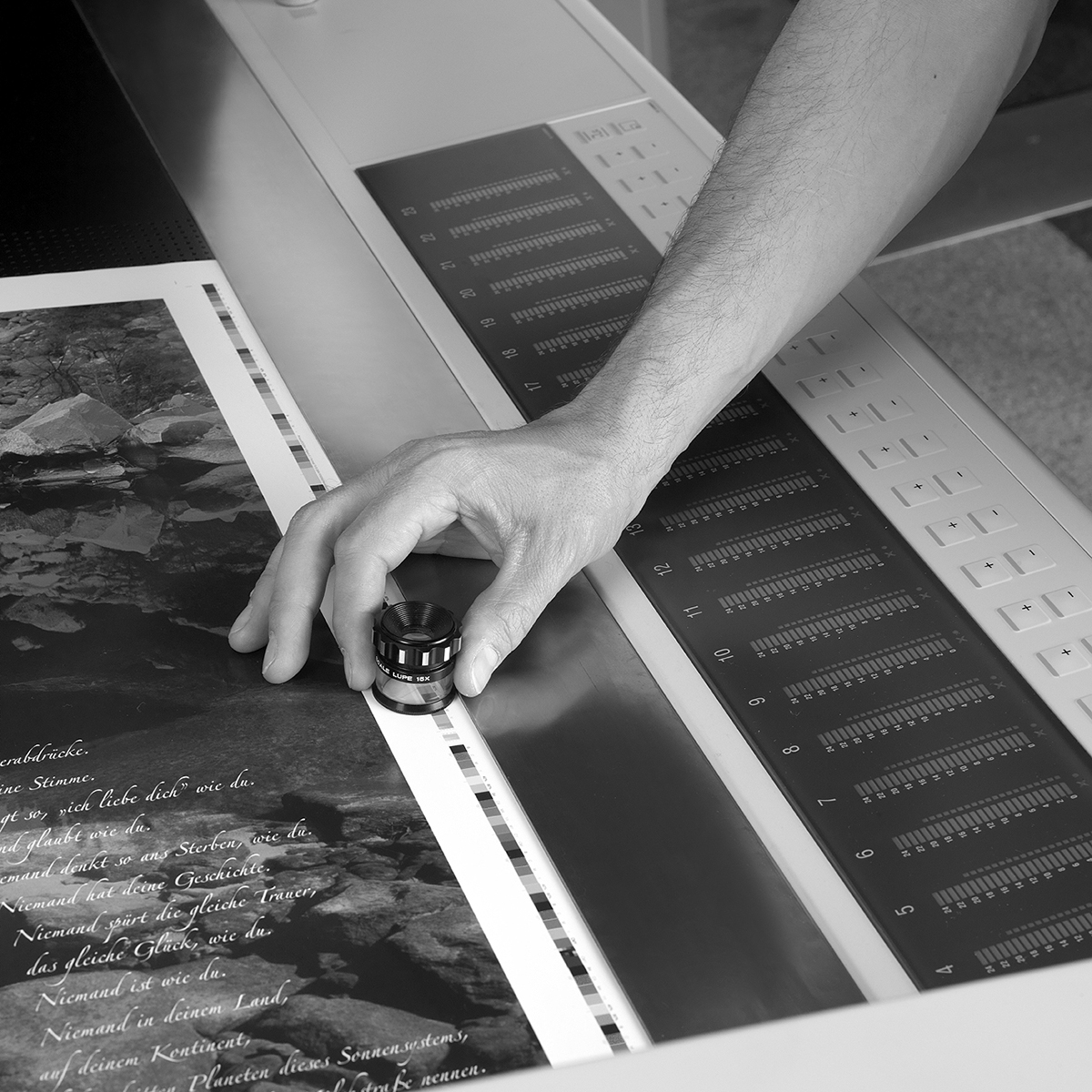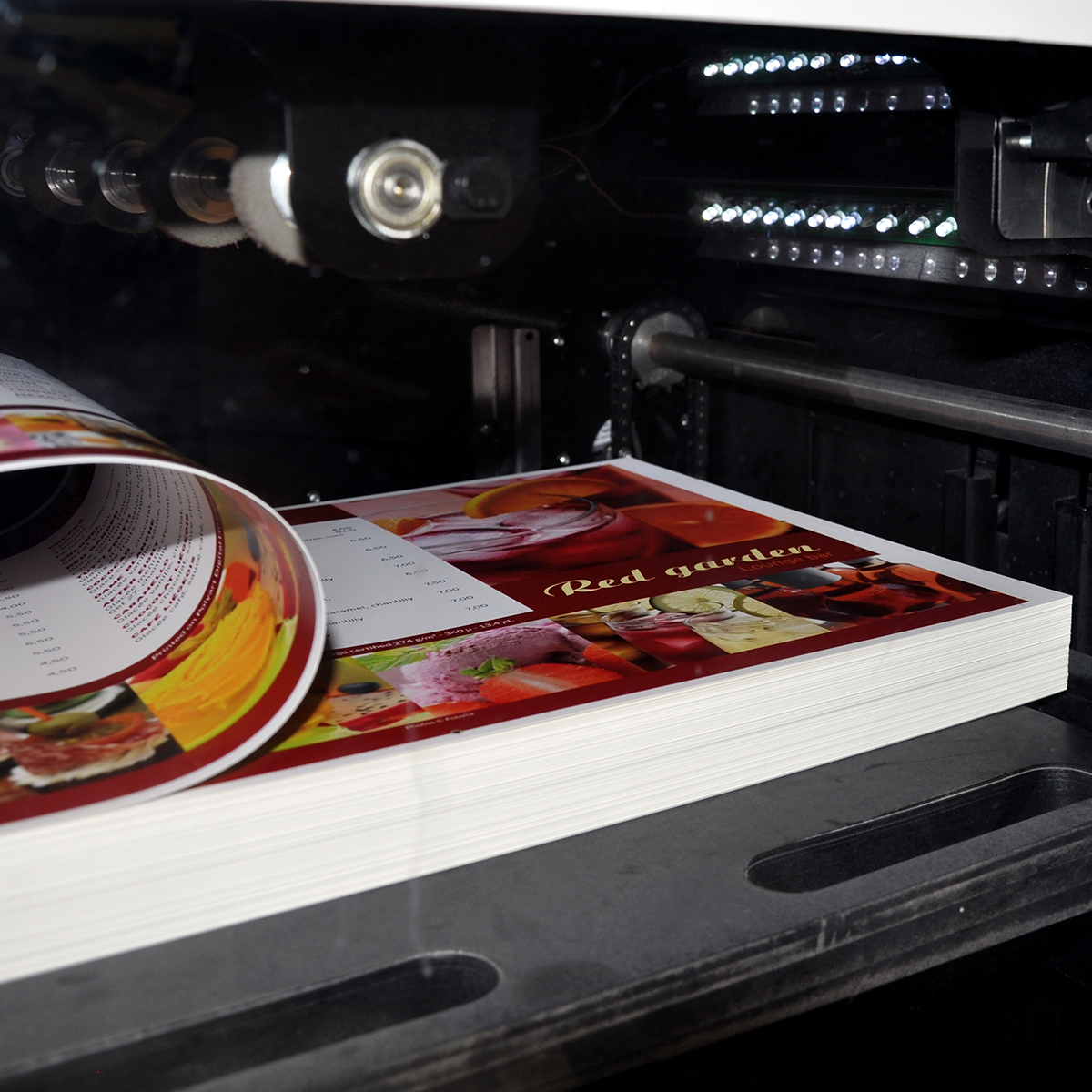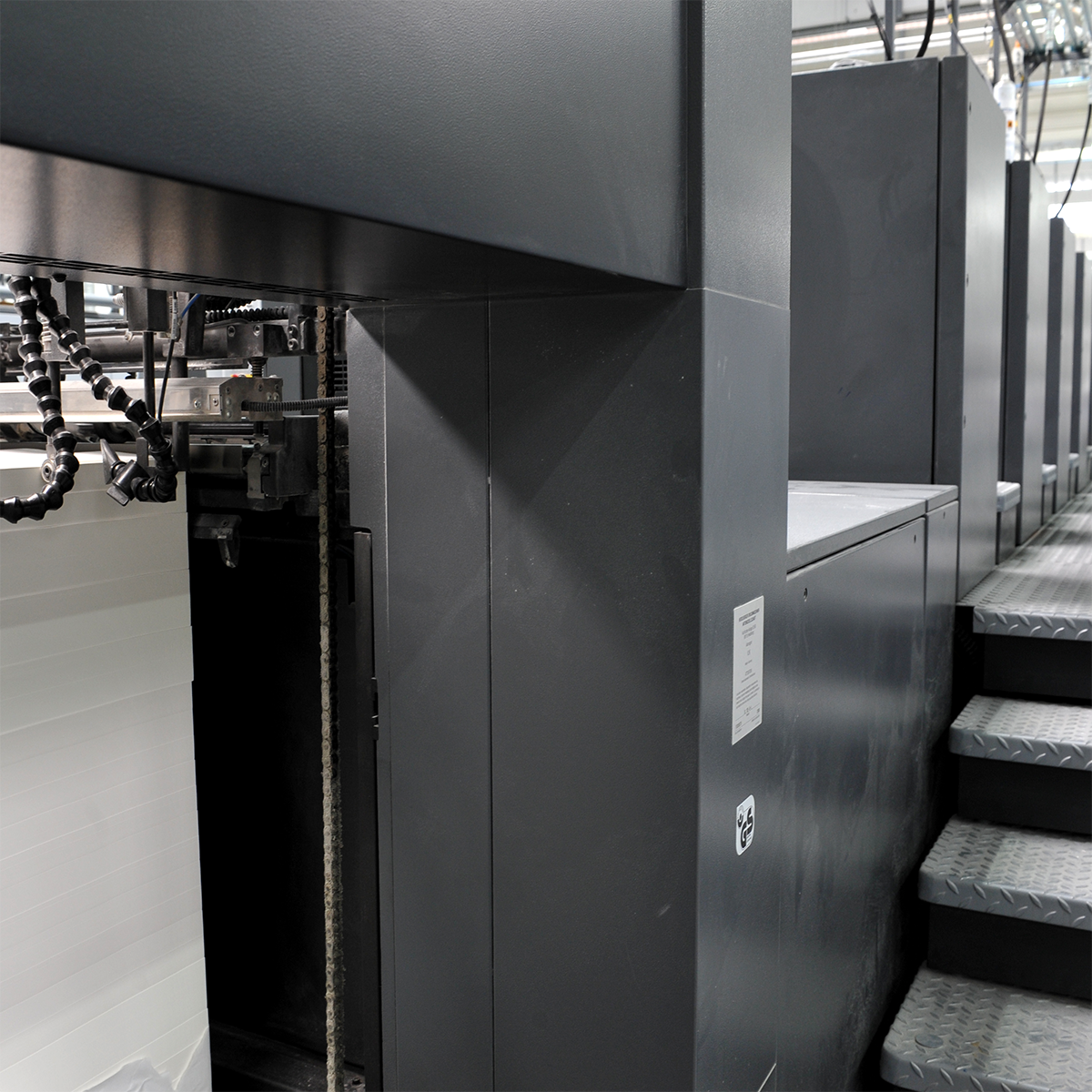How it prints
Polyart® adapts quickly to most printing processes, such as offset litho, flexography, gravure, rotary letterpress, screen, as well as variable information systems such as thermal transfer, ion deposition, dot matrix, ink jet, etc.
Printing Tips
Offset Printing
Inks
- Use litho inks (which have low mineral oil content) and control ink/water balance. You’ll get the same printing result with minimum damping and less ink film.
- With lighter basis weights, use special inks with very low mineral oil content that are allowed to dry entirely by oxidation.
- For best results, consult with your ink suppliers.
- For both heavier and lighter basis weights, print with damping on the dry side while maintaining good ink/water balance
- Ink tacks should be in 16 tack or below.
- Multi-color work is best achieved when printed in a single pass on a multi-color press.
- Hybrid type inks give very good results on Polyart.
Proofing
- Where possible, practice undercolor removal in wet-on-wet printing (to keep ink film weight down).
- Use minimum ink weight in solid area
Drying
- Ink is usually run straight from the can.
- In some instances, may need to include small amount of non-mineral oil ink reducer. (Consult ink manufacturer in these cases.)
- Successful results can be achieved using UV drying techniques with appropriate UV inks (including LED), as well as electron beam and infrared drying techniques.
- Oven temperature should not exceed 74°C / 165°F. (Maximum web temperature 38°C / 100°F)
Stacking
Printed stack hights will depend on subject matter and ink film weight, and the actual gsm of the substrate used. For Heavy ink film weights, stacks may have to be limited 500 sheets.
Feeding
Polyart will feed just like a matte-coated paper on all types of feeders. Ensure that sheets are aired (fanned) prior to printing.
Anti-Offset Spray Powder
Should be used during printing by litho and letterpress.
With heavy four-color process and/or solid background work, use non-vanishing, starch-based offset sprays of small particle size (20 microns and above, .5 to 1 mil).
Humidity
Keep pressroom humidity levels at 45-60%.
Small Offset Machines
- Keep the proposed end-use in mind when selecting inks. (For example, light-fast inks must be specified for prints to be exposed to sunlight.)
- Synthetic oxidizing inks are recommended.
Litho & Letterpress
For best results, use screen sizes of up to 175 screen.
Polyart Digital for HP Indigo digital presses
Polyart is available in a range of HP Indigo certified substrates qualified for use with both sheet and web output devices. Ensure that the sheets have been aired and fanned before loading into the feeder. As with all synthetic papers and films, it maybe necessary to carry out one or more null cycles, as well as blanket shift separations for correct CPR control to obtain optimum print register.
For more information on Polyart for HP indigo, click here.
Polyart Laser
A new range designed for dry toner technologies, printing tips click here.
Polyart Iridescent Printing Tips
For more information click here.
Advice in this page is based on practical field experience and given in good faith but Arjobex may not be held liable for loss or damage arising from action based on this information.




